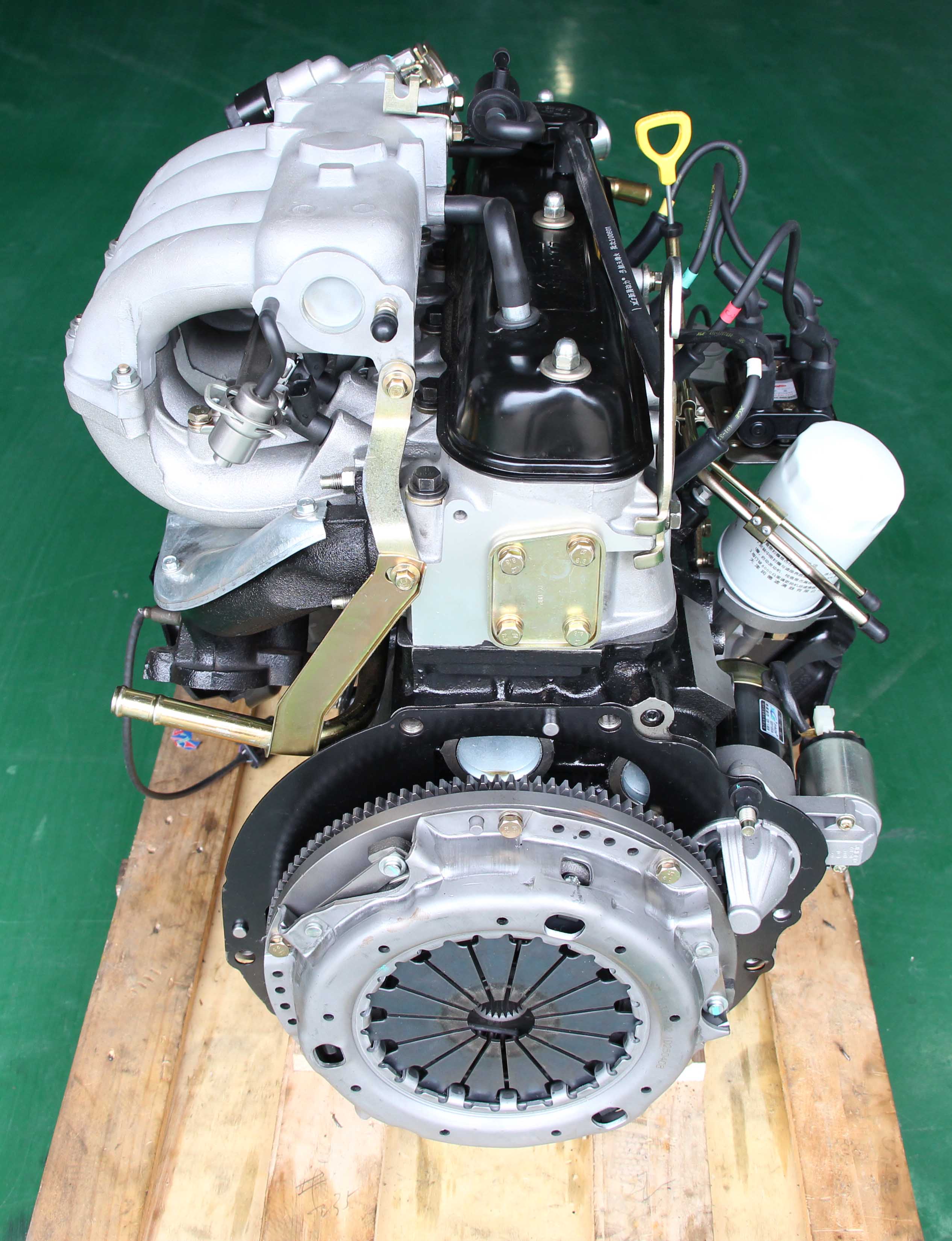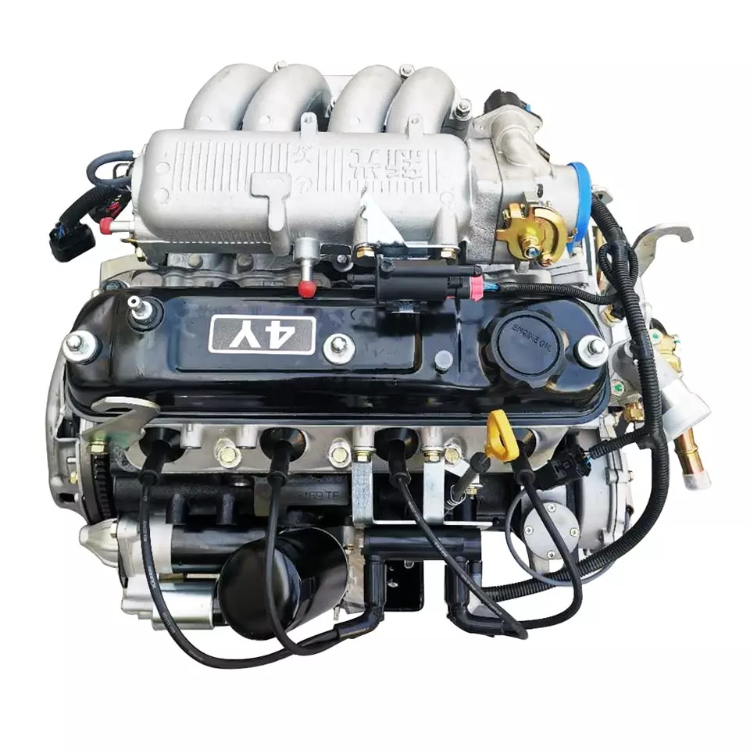Exploring the Benefits of the 4Y Engine for Automotive Enthusiasts
Exploring the Benefits of the 4Y Engine for Automotive Enthusiasts
Blog Article
Why the Engine Is the Best Selection for Performance and Performance in Your Cars And Truck
The engine remains a crucial component in auto design, largely due to its substantial influence on both performance and performance. As developments in modern technology enable smaller sized engines to supply amazing power while maximizing gas economic climate, the assimilation of features such as turbocharging and hybrid systems comes to be increasingly important. These advancements not just enhance driving experience however additionally address environmental issues. The concern develops: just how do these components coalesce to redefine our understanding of automobile performance? Discovering this equilibrium discloses much deeper understandings into the future of engine design.
Comprehending Engine Types
Understanding the various types of engines is crucial for optimizing efficiency and performance in auto layout. The main engine types include internal burning engines (ICE), electrical engines, and hybrid systems, each offering distinct advantages and constraints.
Interior combustion engines, which can be further classified right into gas and diesel variants, depend on the burning of gas to generate power. Gasoline engines commonly give greater RPMs and better velocity, while diesel motor are understood for their torque and fuel performance, making them optimal for heavy-duty applications.
Electric engines, on the various other hand, make use of electric motors powered by batteries or gas cells. They use instant torque delivery, causing smooth velocity and reduced discharges. The efficiency of electric engines is substantially greater than that of ICEs, making them a popular selection for eco-conscious consumers.
Crossbreed systems integrate both internal burning and electric engines, leveraging the staminas of both technologies. They maximize fuel usage by utilizing electrical power at lower rates and switching to gas or diesel for greater speeds or larger loads.
Picking the right engine kind is important for attaining wanted performance metrics and ecological sustainability in modern-day automobile design.
The Impact of Engine Size
Engine dimension frequently plays an essential duty in identifying an auto's performance and effectiveness. Usually measured in liters or cubic centimeters, engine dimension straight influences the power outcome and torque attributes of a vehicle. Larger engines normally generate more horsepower, allowing better velocity and higher top speeds. This is especially useful in applications requiring robust performance, such as sports cars and trucks and sturdy trucks.
Nevertheless, boosted engine dimension commonly associates with lessened gas performance. Bigger engines take in even more fuel, resulting in higher emissions and operational costs. Consequently, manufacturers must stabilize the need for power with the demand for gas economic climate. Smaller engines can deliver adequate efficiency for day-to-day driving while advertising much better efficiency, making them a preferred selection in small and mid-size vehicles.
Furthermore, developments in engine layout, such as turbocharging and straight fuel shot, allow smaller sized engines to accomplish power degrees similar to their bigger equivalents. This trend emphasizes the importance of not only focusing on engine dimension yet additionally thinking about total automobile design and technology (4y engine). Eventually, the effect of engine dimension on performance and effectiveness highlights the demand for customers to examine their details driving requirements and preferences when choosing a vehicle
Advanced Engine Technologies
Technologies in engine technologies have dramatically reshaped the landscape of automobile performance and performance, structure upon the fundamental concepts established by engine size. Significantly, innovations such as turbocharging and straight fuel injection have allowed smaller engines to provide power degrees formerly linked with bigger equivalents. Turbochargers press air entering the engine, permitting enhanced power outcome without a matching boost in engine dimension, while straight injection enhances fuel shipment, improving combustion effectiveness.
Furthermore, variable valve timing systems have become a vital innovation, enabling engines to change valve operation based on driving problems. This flexibility boosts both efficiency throughout acceleration and fuel efficiency during travelling. Crossbreed and electrical engine innovations even more illustrate the shift in auto layout, integrating standard interior combustion engines with electrical motors to make the most of efficiency while reducing exhausts.
Moreover, improvements in materials scientific research have actually resulted in lighter, more durable engine parts, additionally enhancing efficiency and durability. The integration of innovative electronic devices and engine control units additionally enables real-time adjustments, making certain ideal performance throughout various problems. Collectively, these innovative engine innovations not only enhance vehicle efficiency but additionally contribute to an extra sustainable auto future, demonstrating the recurring development of engine layout.
Balancing Power and Performance
Striking a balance in between power and efficiency is critical in contemporary auto design as suppliers seek to satisfy increasingly rigid exhausts policies while pleasing consumer demand for efficiency (4y engine). The challenge lies in maximizing engine characteristics to provide durable power output without compromising gas economy
To achieve this balance, designers use numerous approaches, such as turbocharging, which enhances engine power forcibly in even more air, enabling a smaller engine variation that enhances fuel efficiency. Variable shutoff timing modern technologies also play a considerable function, making it possible continue reading this for engines to adjust their performance qualities based upon driving problems, therefore enhancing both power and efficiency.
Additionally, improvements in products and making techniques have led to lighter engine parts, which minimize total lorry weight and boost gas efficiency without compromising power. Hybrid technologies have also emerged as a viable solution, combining traditional internal burning engines with electrical powertrains to give an increase in efficiency while preserving lower discharges.

Future Fads in Engine Style

Additionally, the development of sophisticated products, such as lightweight compounds and high-strength alloys, i thought about this is readied to transform engine parts. These materials not just lower weight but additionally improve thermal effectiveness, therefore enhancing efficiency. Additionally, producers are discovering variable view it compression ratios, enabling engines to adjust to various driving conditions, improving both power result and gas economy.
Additionally, the surge of synthetic intelligence and artificial intelligence in engine style is allowing anticipating upkeep and real-time performance optimization. This technology can cause engines that self-adjust for optimal performance based on driving patterns.

Conclusion
In conclusion, the engine offers as a critical part in accomplishing optimal performance and performance in modern-day automobiles. The interplay between engine dimension and style continues to advance, driving technologies that balance electrifying performance with environmental sustainability.
Furthermore, advancements in engine design, such as turbocharging and straight fuel injection, permit smaller engines to achieve power degrees similar to their larger counterparts.Advancements in engine modern technologies have significantly improved the landscape of vehicle efficiency and efficiency, structure upon the foundational principles established by engine dimension. Turbochargers compress air entering the engine, enabling for enhanced power result without a matching rise in engine size, while straight injection maximizes fuel distribution, improving burning effectiveness.
Hybrid and electric engine modern technologies even more highlight the shift in auto design, incorporating conventional inner combustion engines with electric motors to maximize effectiveness while reducing discharges.
Jointly, these advanced engine innovations not just improve automobile efficiency but likewise add to a more sustainable vehicle future, showing the ongoing development of engine layout. (4y engine)
Report this page